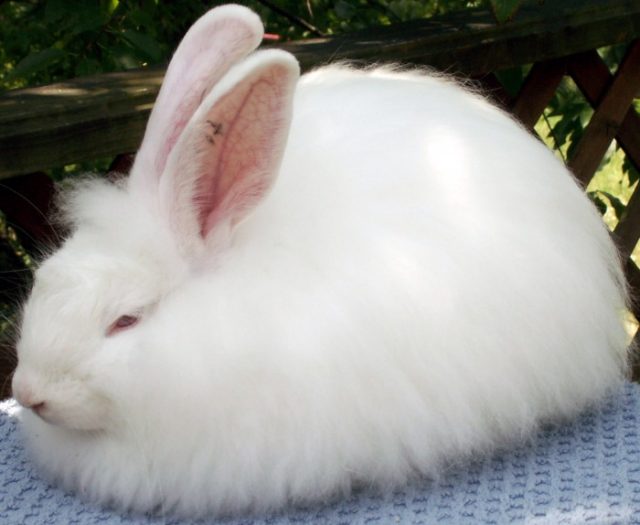Type the name of the breed you're looking for below
[wpdreams_ajaxsearchlite] Don't see the breed your're looking for? Click here and let us know!
Breed Characteristics
1 paw - breed exhibits the least amount of this characteristic
5 paws - breed exhibits most amount of this characteristic
French Angora rabbit
| Origin | The French is probably the nearest in type to the original angora rabbits, all other breeds coming from it. France was certainly the first European country to widely raise Angora rabbits for their wool. The story goes that French sailors brought these longhaired rabbits back from Ankara (Angora) Turkey in 1723. The first wool rabbit found in an American standards book was the “Angora Wooler,” which was split into the English and French breeds in 1944. Today the French is the second most popular Angora breed, slightly behind the English. The French Angora may show small tufts on the tips of the ears, but generally the ears, face, and lower legs are free of wool. In fact, heavy furnishings on the face and wool below the ankle (front feet) or hock (back feet) are disqualifications. These DQ’s help keep the angora breeds separate, discouraging the practice of crossbreeding any wool bunnies that are available then showing the offspring as whichever breed they most resemble. The wool of the French Angora is characterized by a high quantity of guard hairs – the straight, strong hairs that protect the softer underwool. This gives the wool its coarse texture as compared to the English Angora, which should also have guard hairs but fewer of them. A coarse texture makes French Angora wool easier to groom, but frequent brushing and/or blowing is still necessary to keep a coat in good condition. The French has commercial body type and is the only Angora breed (currently) to recognized broken pattern colours. Like all wool breeds, care must be taken to keep a French Angora’s environment clean and debris-free to prevent stained and matted wool. Pineapple, papaya, or enzyme tablets containing Bromelain or Papain are important supplements to prevent wool block. They also need to eat plenty of roughage (fiber), usually accomplished by feeding free-choice hay. It is more work to raise Angoras than other breeds, but the payoff is an abundance of wool you can spin into soft yarn. |
Physical Attributes
| Weight | 9 - 10.5 lbs. (4.1 - 4.8 kg) |
| Ear Type | Erect |
| Fur Type | Wooly |
| Colours | Many different colours have been bred. |
| Appearance | Medium long rounded body, ears long and erect. Face, ears, and front feet have short fur; rest of body has very long wool. |
| Other Considerations | Life Expectancy: 5 - 8 years Temperament: Docile This rabbit must be fed a special diet and carefully groomed every day. Desirable characteristics of the fibre include its texture, warmth, light weight, and pure white color. It is used for sweaters, mittens, baby clothes and millinery. |



